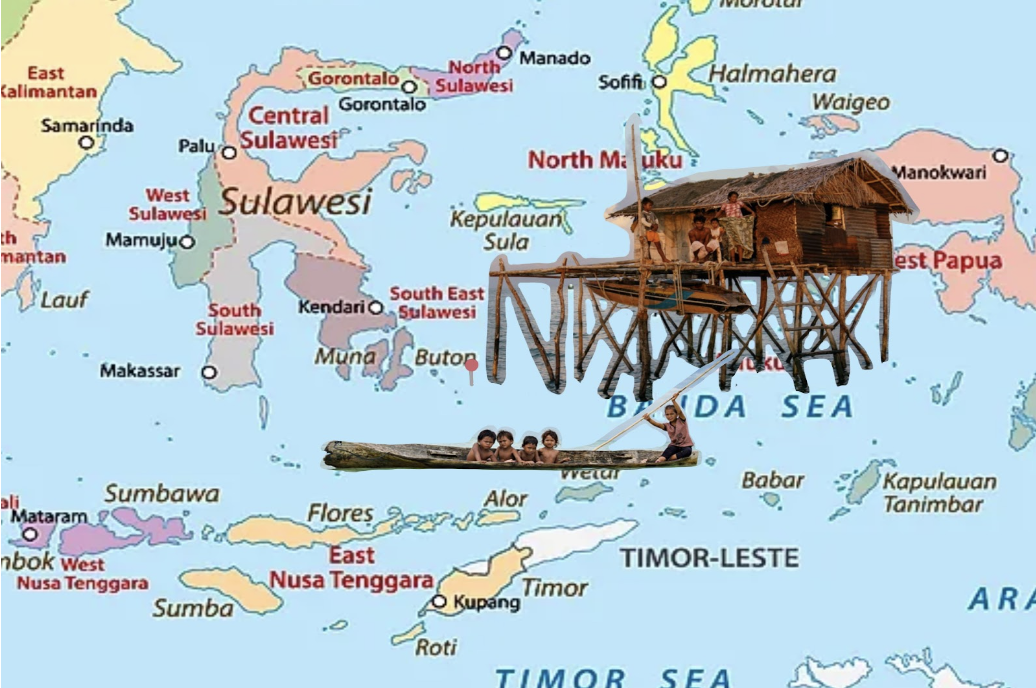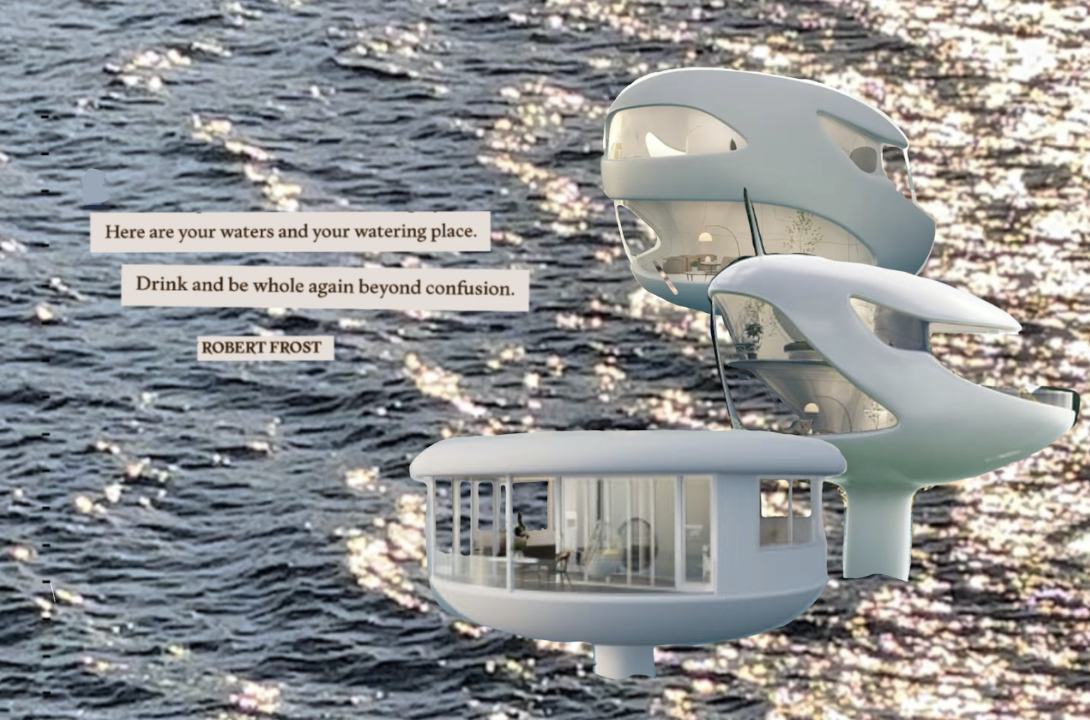Postcard 1

Nearly all the sources about the Bajau romanticize them as “Sea Gypsies” and “Sea Nomads,” yet they are treated as “no ones” the by Indonesian, Malaysian, and Philippine governments, as well as by neighboring citizens who do not respect their waters. I attempt to represent this romanticized view of them through the high-quality image of the Bajau home and Bajau people set in contrast with the printed, plain aesthetic of the map of the Indonesian seas. The challenges the Bajau face show that a static, non-sedentary lifestyle is necessary to receive the benefits of citizenship.
Sources:
https://www.worldatlas.com/maps/indonesia
Postcard 2

I encourage the idea of thinking of the oceans in the way we think of land: able to contain human life. On a modern map, blue represents the oceans and green/colors represents the land. We often see the colors as significant and the blue as insignificant/space between countries. I inverted those colors here to change the viewer’s assumptions about the global map and what a map signifies. This postcard should beg the question: what could happen if we think of the oceans as habitable?
Sources:
https://www.mappr.co/political-maps/world-map/
https://www.smithsonianmag.com/smart-news/thousands-of-new-viruses-discovered-in-the-oceans-180979917/
Postcard 3

Seasteading is the next step in mankind’s interaction with the ocean. I attempt to show what seasteading would look like in this postcard. The quote by Robert Frost sheds light on how those looking seaward for new lifestyles are seeking out a final frontier to create an intentional community to better humankind – a “watering place” of sorts. The creators of the Seasteading movement claim this new lifestyle will create citizenship, economic prosperity, and new forces to combat climate change, among other effects that will improve our world that is too dependent on stasis.
Sources:
Robert Frost, “Directive”
